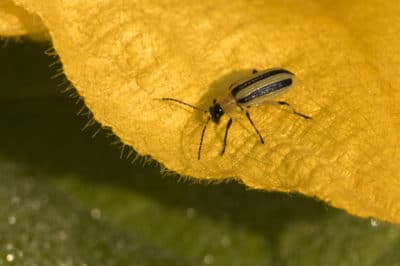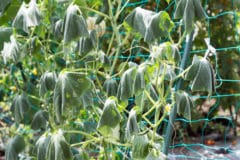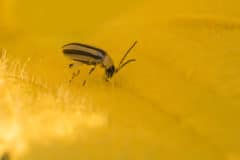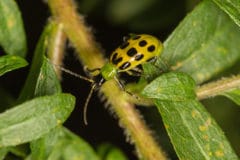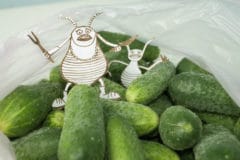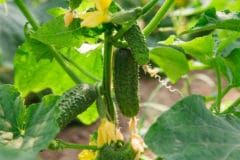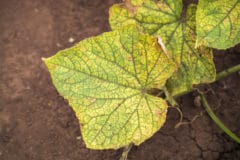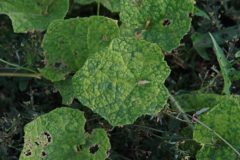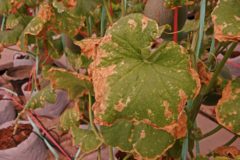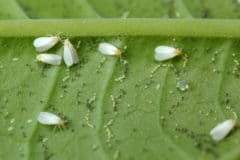Identification
At just 1/5-inch long, striped cucumber beetles have little trouble disappearing beneath cuke petals and foliage. Fortunately, their coloration — yellowish-green with black heads, yellow midsections and three lengthwise black stripes on their wing covers — gives them away.
Life Cycle
Adult cucumber beetles overwinter in weeds, plant debris and woods near the vegetable garden. When warm weather returns, they feed on flowers and foliage until cuke, squash and melon seedlings to emerge. They’ll eat some seedlings down to the ground, and the ones they miss become targets for their soil-dwelling offspring. The cycle repeats for two to three generations each year.
Damage
Adult and larval feeding can kill cuke family seedlings. Although older plants can tolerate losing up to half their flowers and foliage to the pests, every female flower they lose means one fewer fruit in your harvest. The greatest threat they pose, however, is as carriers of bacterial wilt disease.
Recognizing Bacterial Wilt
When the germs responsible for bacterial wilt infection begin circulating through a plants’ system, individual leaves start wilting and shriveling. At first, the leaves recover when temperatures drop at night but wilt again when temperatures climb. Without treatment, bacterial wilt moves from branch to branch until the entire plant collapses.
Managing Wilt
With quick action, you may be able to stem bacterial wilt’s progression by:
- Pruning any leaves and stems as soon as you notice them wilting. Doing so may keep the disease from spreading through the rest of the infected plant.
- Sterilizing your pruning tools after each and before putting them away. Unless you do, they could spread the bacteria to other plants.
Expert gardener’s tip: If only one plant is showing signs of wilt, the smartest thing to do is to remove and destroy it. Otherwise, any beetles to feeding on it could become infected and spread the disease elsewhere
Organic Beetle Control
To control striped cucumber beetles out of your cucumber patch without chemical sprays, protect your seedlings at planting with fabric row covers. They’re permeable enough to let air, sun and moisture in but heavy enough to keep the pests out. Boost your control efforts by planting burpless cukes such as ‘Holland,’ ‘Diva’ and ‘Tyria F1.’ Striped cucumber beetles avoid them.
